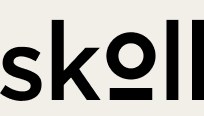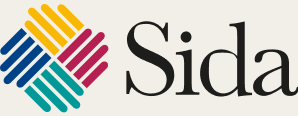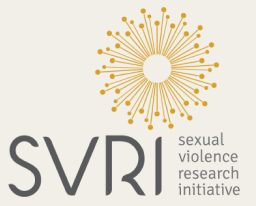Since October 2019, Meedan has run a global fact-checking project using the WhatsApp Business API and powered by Check, an open-source platform built by Meedan. During the year, we entered into new and exciting partnerships with fact-checking groups and newsrooms across the globe to combat misinformation. As a community, we have made huge strides and learned from each other.
Starting this month, we will speak to members of our partner organizations about their fact-checking experiences and their vision for the future. Here, we present the first interview of the series with Kritika Goel, Associate Editor at the Quint.
Kritika leads WebQoof, an independent fact-checking initiative of The Quint. According to Urban dictionary, WebQoof means someone who believes every word or information on the Internet and social media. We have been working with Kritika for the past five months and have found in her a passionate fact-checker, someone who gives honest feedback and is willing to take up new challenges. It has been a pleasure working with Kritika, one of the women leaders in the fact-check community.
How long have you been a fact-checker? What has been your experience before becoming one? What brought you to this?
I started full time fact-checking in June 2019. Before that I was a desk reporter and a part-time fact-checker.
But with every news break, I also saw a parallel narrative, shared on social media and sometimes by mainstream news channels. This information, in some cases, was unverifiable and had no source. I just wanted to go to the root of the problem and understand where it is coming from. As a journalist we are taught to ask questions. For me an important question was - what is the source of the information? Most of the time, there was no answer. It was after the 2019 Lok Sabha elections, that I shifted to full-time fact-checking.
What is the Indian media and fact-checking ecosystem like? What are the strengths and what gaps do you see?
In India, there were smaller and independent fact-checking organizations like Alt News, BOOM and SM Hoax Slayer. Now we even have the mainstream media in this space.
There is a need for greater collaboration and resource sharing. We know that misinformation travels more widely and faster than fact-checks. If a viral piece of content is consumed by 100,000 people, are even 10% consuming the fact-checks? The motive is to amplify fact-checks and reach a wider audience. Only then we can combat misinformation. The idea is not to push out a story and to say that we have done a fact-check, but for people to get the right information. For that, there should be collaboration between fact-checkers, which is happening, but should be at a bigger scale. There was a global collaboration under the International Fact Check Network for tackling COVID-19 related misinformation. I was able to fact-check two-three pieces of misinformation, including a video which was viral in India, but was originally from Taiwan by reaching out to Summer Chen of Taiwan FactCheck Center. So, collaboration really helps.
Collaboration in distribution can also help in reaching a wider audience. For instance, The Quint has a certain audience and Alt News has another. Together, we reach a larger audience. When WebQoof started we used to reproduce content from BOOM, Alt and SM Hoax slayer, which helped in amplifying the reach of the content. I am sure that we can come up with better ways and see how fact-check content can reach a wider audience.
How important would you say is fact-checking in the current times? Do you see a real impact with the stories and fact-checking work you do?
There definitely is a need for fact-checking. It has become another branch of journalism.
In terms of impact, there is an alert audience who flags and identifies misinformation. Recently, we got in touch with individuals who tag us and other fact-checkers regularly on Twitter to flag misinformation. When we reply with the fact-check, they share it with others. They are like volunteers; by sharing verified information with their networks, they are amplifying the distribution and helping facts reach a wider audience. That is an impact for me and to highlight such contributions we did a story on these citizen fact-checkers.
We have done so many stories on mainstream media sharing false information. They do not always acknowledge that there has been a mistake or issue a clarification, while they also have fact-check verticals. The fact that the mainstream media, including us, has fact-check verticals is itself an impact. Media organizations have realized that the audience is interested in facts and not just narratives and whataboutery. This is an impact brought about by the entire fact-checking community.
What is your most challenging fact-check experience and how did you work on it?
The recent amendment of the Citizen Amendment Act (CAA) in India was followed by protests in many parts of the country. The Jamia Millia Islamia University became the centre of protests with clashes between pro and anti CAA student groups and heavy deployment of police forces. During this episode, there were claims that a member of the Akhil Bharatiya Vidyarthi Parishad (ABVP), the student wing of the ruling Bharatiya Janata Party, was seen exiting the university compound wearing a police gear.This was used to claim that the government and police were not doing their job and were involved in the violence inside the campus. However, the person was a cop in civilian clothes wearing a gear.
We got in touch with the ABVP member who was misidentified, the concerned cop and the people who were around when the incident took place. Luckily we had reporters on the ground. But, it took us over a day to speak to the cop in concern, to reach out to people and also to verify if what they said is the truth or not. It was very difficult at that point.
We could not take anybody at face value and had to verify everything to make sure that they were telling us the truth. During this time, there were also other social media posts misidentifying people. So, this was an important story to do at that point. Four of our team members were involved in the story and we wanted it to be watertight.
As a fact-checker and journalist, my biggest nightmare is what if we verify a piece of information based on inputs from an individual and they aren’t telling us the truth? So, I do not take anything at face value and look for evidence to put forth the facts.
You recently took charge of Quint’s fact-check team. How is the new experience and what are your plans for the team?
I have been working with WebQoof for over a year. Since my senior editor moved on, I have the new responsibility of leading the team. It is definitely exciting as there is a lot happening in the misinformation space.
An important strategy for me is to do more ground reports so that we can bring out the truth and put forth the facts from the ground.
Since the beginning of my work at WebQoof, I have been interested in media literacy. Once you empower the reader, it will help in expanding the community. An individual can be a fact-checker in their family and friends WhatsApp groups. Many of us started off like that.
We also intend to do a lot more in the health fact-checking space . The pandemic has really shown how prevalent and detrimental health misinformation is. After the COVID-19 outbreak, we are receiving more fact-check requests on general health misinformation as well. So the key focus areas for me would be: Media literacy, more ground reports and focus on health misinformation.
How do you deal with the pressure in having to respond to misinformation on a daily basis and even come across some distressing content?
For the longest time, I thought I was immune to violent and graphic content and did not get impacted. But there are days when we have to look at gory images, blood, violence all day; I think why is there so much hatred and violence? There are really distressing videos where you see people thrash and hurt each other.
Sometimes, it does not affect me. But, I also keep chatting with my team members, because there are people who get really impacted and post-traumatic stress disorder (PTSD) is a real thing.
Once my team member said, "I go back home, I just think about these’. Sometimes we want that choice to not look at distressing content. There are days when you feel low because of it. I wish we had a choice, but it is part of the job of a fact-checker.
I speak to my team very proactively; we are a bunch of young people and we understand each other well. There are days when you should take a step back and not look at content that is disturbing. I was lucky to have a senior editor who took note of all this and made sure we were not too overwhelmed (for the want of a better work) with the kind of content we are engaging with. But yes, I think there is a need to have this conversation and I hope as a team, we are able to understand this better moving forward.
What do you think works the most to stop people from sharing misinformation and build a culture of verifying information - stories, videos or broader interventions like media literacy?
Even if we can develop a habit of asking what is the source of the information, I think we will go a long way. When I joined WebQoof, I had fears of how I would be able to do it and identify misinformation. We are taught tools, but verifying content does not come instantly. The biggest lesson I taught myself was to question the source. If you know where the claim is coming from, you can go ahead and verify that.
Creating awareness about being able to verify and to forward suspicious content to fact-checkers is important.
In terms of format, videos travel faster and they travel more. At WebQoof we produce a lot of videos, including video explainers.
How has been your experience of using Check? What else would you like the tool to do for you?
The experience has been good so far. I really like that we now have data on how many people are engaging with the bot and resources. This is a good way to know how useful it is.
Shalini and Pierre initially told us that it is important to sometimes engage with the reader. As quereis have gone up, that does not happen often. We intend to do that more often. When requests are out of scope for fact-check, we inform the user and ask them to send any forwards which they are doubtful of. This engagement helps in building trust.
All the constant feedback in weekly calls really helps. Initially, I was not sure of the weekly calls. But they have been extremely good at raising issues and streamlining the process.
We have requested for a feature to know once a user receives a report we sent, in other words a confirmation. We hope to see that soon. (This feature has been implemented by Meedan since this interview was held).
Constant feedback and communication are really helpful. Intercom is also helpful to immediately flag the issue. After a day I may not remember it or will not have the link of the item. If I send the issue and the URL of the item, I know that I will receive a response in some time.
What kind of misinformation do you foresee in the post-covid world? What support do you expect from international fact-check communities and technology partners like us?
Access to more data about the kind of work we are doing is an expectation that I have from all technology partners. And probably, not just our work but the impact that fact-checking community has had will be good to understand. In my opinion, that will help in shaping our future goals (as a community).
We work with Facebook, Meedan and I think it will be helpful to know if our efforts of combating misinformation are translating into action. Insights on whether people are engaging more with fact-checked content, whether they want more verified news and what is the level of trust they have in fact-checkers. These will be very helpful going forward.
What is your vision and hopes for journalism and the world in a post- pandemic world?
I wish we have days where we look for misinformation and do not find them. Even if I can’t wish for a world without misinformation, I definitely hope that people verify information before they share it.
My hope for journalism is that mainstream media becomes more responsible. There needs to be more responsibility and accountability for information that media groups put out. It is important because misinformation has real life consequences.
When they publish unverified information, it creates a narrative that sometimes becomes difficult to verify or disprove. If something is unverifiable and just a narrative that has been weaved, I may not be able to touch it or put out a story on it or tell people whether it is true or not. When news is unverifiable, it tends to create a parallel narrative. This can result in hate speech and violence.
People need to verify, be alert and if they cannot verify, send it to us.
What are your interests outside of work?
I like reading, but that is something every journalist does. I love cycling, doodling and eating a lot.
–
Watch this video from July 2020 where Kritika Goel discussed with Meedan’s Shalini Joshi and other speakers about India’s fight against COVID-19 related misinformation.
We collaborated with 53 partner organizations worldwide to design and carry out our 2024 elections projects. We extend special gratitude to our lead partners in Brazil, Mexico and Pakistan, whose work we highlight in this essay.
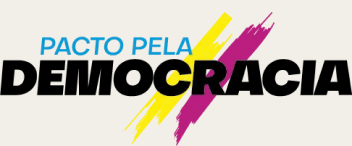
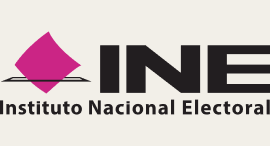

The 2024 elections projects featured in here would not have been possible without the generous support of these funders.
